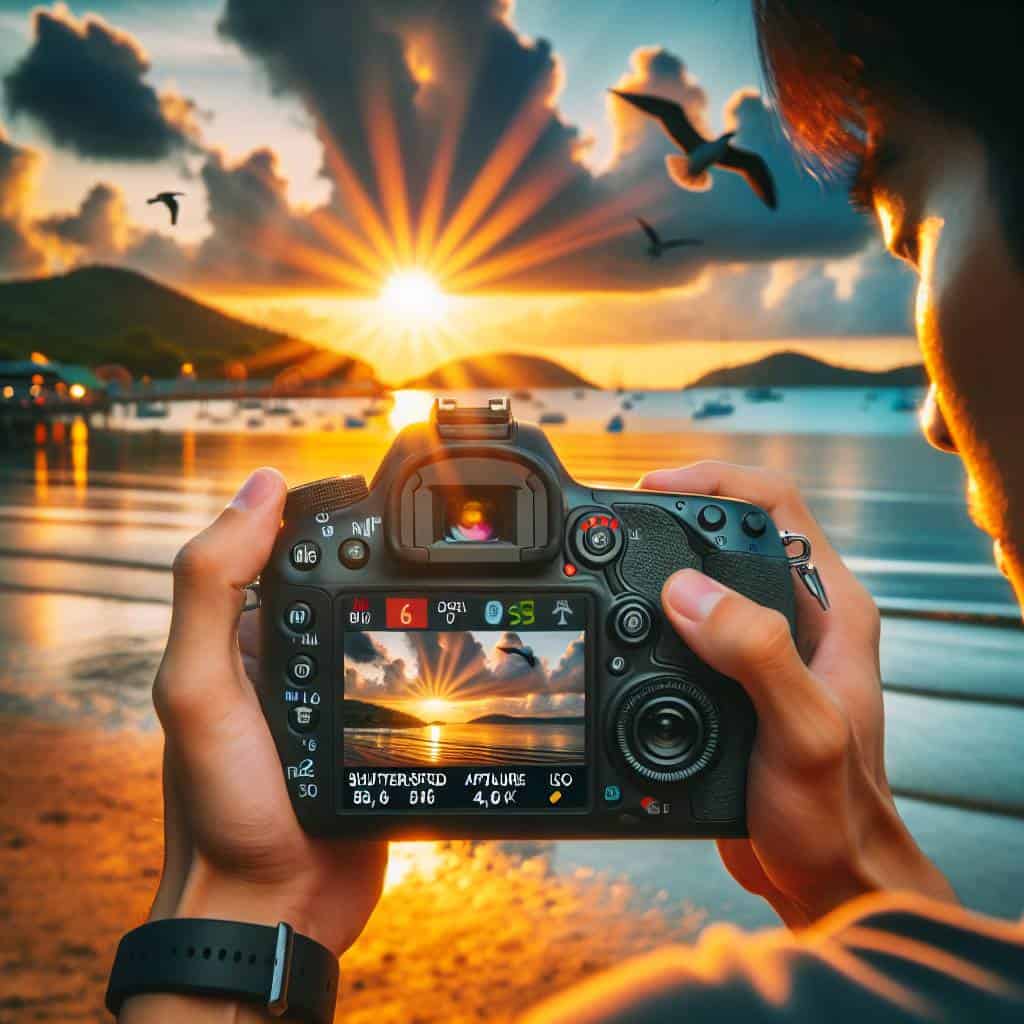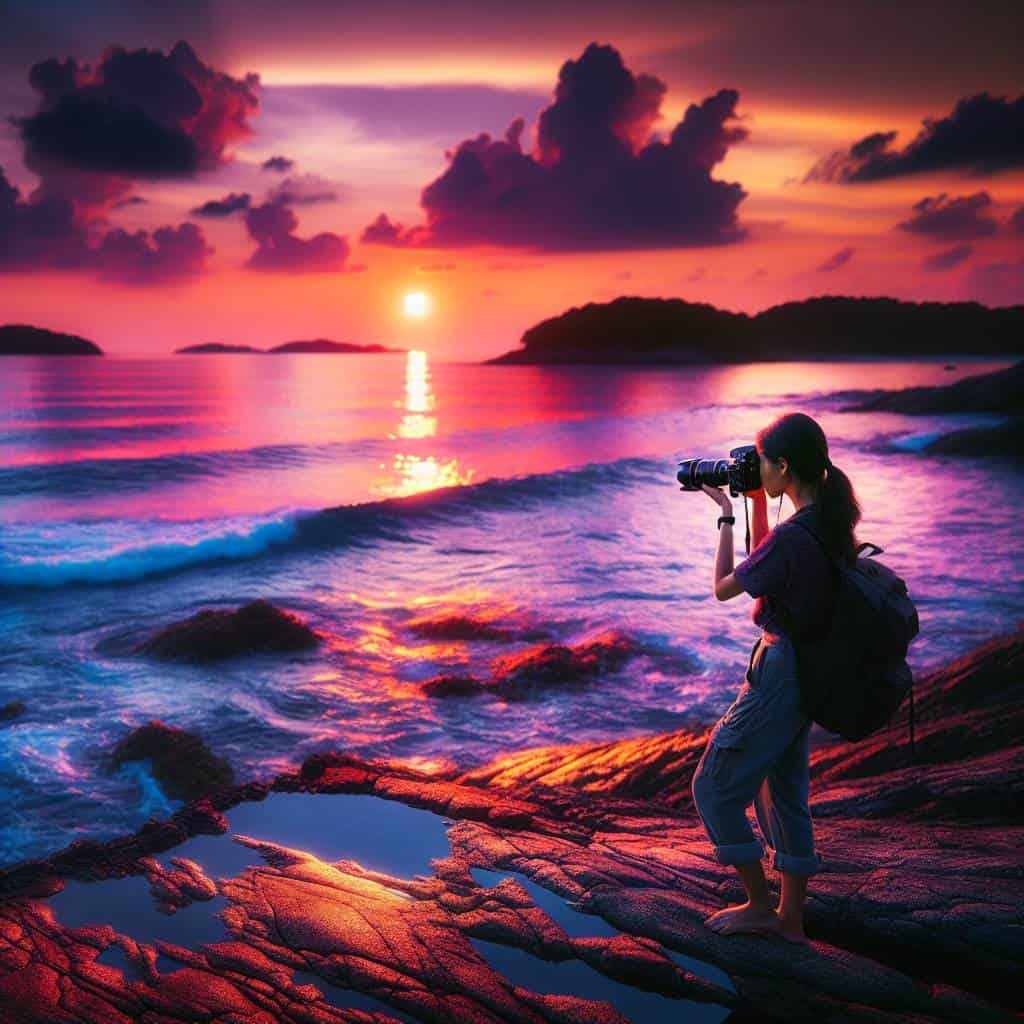I remember the first time I picked up a camera, full of naive optimism and ready to capture the world. I thought I was a natural, snapping away at sunsets and seagulls, convinced I was creating art. But when I reviewed the photos, they looked more like a series of blurry, overexposed disasters. My visions of grandeur were promptly crushed by the harsh reality that I had no clue what I was doing. The exposure triangle? Sounded more like a cruel joke than a helpful concept. I was lost at sea, floundering amidst terms like aperture and ISO, with only the mocking cries of seagulls for company.

But here’s the thing—I’m a stubborn fisherman at heart. I refused to let those elusive concepts slip through my fingers. In this article, we’re going to dive deep, past the surface-level jargon, into the undercurrents that make your camera tick. I’ll guide you through the enigmatic dance of aperture, shutter speed, and ISO, revealing how they intertwine to capture the essence of a moment. Together, we’ll navigate this triangle of light, and I promise, by the end, your photos will no longer be a shot in the dark. Let’s embark on this journey and reel in the shimmering truths of photography.
Table of Contents
- How My Shutter Speed Became My Unlikely Best Friend
- The Day I Finally Convinced ISO to Work With Me
- Aperture: The Mysterious Frenemy of Photography
- Why Your Photos Suck: The Cold Truth About the Exposure Triangle
- The Brutal Truths Behind Mastering Your Camera
- The Dance of Light and Shadow
- Untangling the Exposure Web: Your Burning Questions Answered
- The Dance of Light and Shadow
How My Shutter Speed Became My Unlikely Best Friend

There I was, standing on the edge of the world—or at least it felt that way—where the land meets the sea, trying to capture that perfect moment when the sun dips below the horizon. It’s a dance between light and time, and I was fumbling with both partners. My early days in photography were a blur of missed opportunities and overexposed disasters, until I stumbled upon the quiet genius of shutter speed. It might sound dramatic, but this little dial became my unexpected ally in the war against mediocre photos. You see, shutter speed is like the heartbeat of an image, dictating whether a scene is frozen in time or a symphony of motion. It taught me patience, forced me to pay attention, and in doing so, it became my unlikely best friend.
Understanding how shutter speed works in tandem with aperture and ISO—those other two mysterious muses of the exposure triangle—was like unlocking a secret code. The aperture, with its wide-eyed curiosity or pinhole precision, dictated the depth of field, while ISO controlled the sensitivity of my camera’s sensor, whispering in hushed tones to either brighten the scene or let it bask in its natural gloom. But shutter speed? It’s the tempo. The maestro with the baton, commanding the orchestra to either hold a note or rush into a crescendo. In learning to wield this power, I found myself capturing not just images, but moments—and isn’t that the real treasure we all seek?
The Day I Finally Convinced ISO to Work With Me
It was one of those rare mornings when the fog rolled in like an old friend, draping the town in a soft, mysterious veil. My camera and I stood at the edge of the pier, battling the elements and the ever-elusive ISO. I’d been at odds with it for weeks, each attempt more frustrating than the last. But that day, as the light danced delicately through the mist, something clicked—not just in the mechanism, but in me. I realized that ISO wasn’t the enemy; it was the key to unlocking a world of nuance. By embracing its quirks, I found a way to paint the shadows with light and accentuate the subtle textures in the scene before me. It was as if the ISO and I had finally reached a truce, allowing my shutter speed to sing the true song of that misty morning.
As I stood on the edge of a rocky cliff, camera in hand, ready to capture the elusive dance of light and shadow, I realized that much like photography, life itself is a delicate balance of elements—aperture, shutter speed, ISO. Each setting is a choice, a step toward clarity or chaos. But here’s the twist: while the exposure triangle is crucial for the perfect shot, there’s another triangle I stumbled upon that balances life beyond the lens. Enter transen berlin, a platform where the angles of conversation, connection, and companionship converge. Just as a whisper of wind off the North Sea can change the mood of a photograph, meeting kindred spirits from Berlin can shift your perspective, making the world feel a bit more vibrant, a bit more in focus.
In that moment, I understood that ISO wasn’t some technical hurdle to overcome but a partner in crime, ready to reveal the hidden beauty of the ordinary. With a slight adjustment, what was once a washed-out blur transformed into a tapestry of contrasts. The fog, once a nebulous shroud, became a canvas, each droplet a stroke of genius. It wasn’t just about manipulating numbers; it was about feeling the pulse of the moment and capturing its essence. I finally saw ISO as an ally, whispering secrets of light and shadow that only the patient could hear. And there, amidst the salt and sea, my photography was reborn.
Aperture: The Mysterious Frenemy of Photography
Ah, aperture. The elusive siren of the photography world. You think you’ve tamed it, but just when you start feeling smug, it slips through your fingers like sand. In one moment, it’s your ally—offering up those deliciously blurred backgrounds that make your subject pop like a lighthouse beacon in a storm. In the next, it’s your nemesis, laughing as your perfect shot is ruined by an unintended depth of field that could swallow an entire ship. It’s that fickle mistress who dances between light and shadow, deciding whether your photo is a masterpiece or a muddled mess.
I remember the days when I thought my shutter speed was my only true friend in this photographic journey. But then aperture came along like that mysterious stranger in a noir film. It taught me that light isn’t just something you capture—it’s something you manipulate, bend, and coax. It’s a delicate dance, balancing the wide-open vistas of a low f-stop with the sharp focus of a higher setting. And just when I think I’ve got the steps down, aperture throws in a new twist, reminding me that in this dance of light, there’s always more to learn. So, I embrace it for what it is—a frenemy that keeps me on my toes, always challenging, always rewarding.
Why Your Photos Suck: The Cold Truth About the Exposure Triangle
- Aperture isn’t just a fancy word—it’s the gatekeeper of light, deciding how much your lens lets in and how blurry or sharp your background ends up.
- Shutter speed is the timekeeper you didn’t know you needed, freezing moments or letting them bleed into dreamy streaks on your canvas.
- ISO is your camera’s sensitivity dial—crank it up when you’re desperate, but beware the grainy noise that lurks in the shadows.
- These three—aperture, shutter speed, and ISO—are the rebellious trio you need to orchestrate, not just a random setting you fiddle with.
- Mastering their dance is the difference between capturing a lifeless snapshot and immortalizing a scene that breathes with emotion.
The Brutal Truths Behind Mastering Your Camera
Aperture isn’t just a number—it’s the gateway to depth. If you want your photos to have that dreamy background blur, crank it wide open. But beware, too much and your focus might drift, leaving your subject adrift in a sea of blur.
Shutter speed is time’s gatekeeper. Freeze the moment with a fast click, or let it linger to capture movement’s poetry. Just remember, the longer it stays open, the more light crashes in, sometimes uninvited.
ISO is your camera’s sensitivity setting, the secret ingredient that can save a shot in low light. But push it too high, and your masterpiece might end up looking like a grainy crime scene. Balance is key.
The Dance of Light and Shadow
Mastering aperture, shutter speed, and ISO isn’t just technical jargon—it’s the art of taming light itself, bending it to your will until it paints your vision on the canvas of reality.
Untangling the Exposure Web: Your Burning Questions Answered
Why does my camera keep betraying me with overexposed images?
Ah, the classic betrayal. Often, it’s a rebellious aperture letting in too much light or a sluggish shutter speed that’s soaking up more than it should. Dial back that aperture or quicken the shutter to bring your images back from the brink of blinding.
How do aperture, shutter speed, and ISO dance together without stepping on each other’s toes?
Picture it like a delicate waltz. Aperture controls the light’s floodgate, shutter speed decides how long the party lasts, and ISO cranks up the volume in dim conditions. Nail the rhythm, and you’ll capture the harmony of light.
Can fiddling with ISO really save a poorly lit shot, or is it just a pipe dream?
ISO is your emergency flare. It can brighten a dreary scene but beware—too much, and you’ll be swimming in a sea of noise. Use it wisely, like a whisper in the dark, and it might just save the day.
The Dance of Light and Shadow
In the end, it’s not just about how well you know the exposure triangle; it’s about how you let it breathe life into your images. I remember standing on the edge of a cliff, the ocean below roaring its eternal song. My camera in hand, I realized that aperture, shutter speed, and ISO aren’t just technical settings—they’re the whispers of the elements urging you to capture the world as it feels, not just as it is. Each adjustment transforms the mundane into the magical, turning a simple snapshot into a moment of truth.
Through the lens, I’ve come to understand that photography is less about precision and more about presence. It’s about being there, amid the chaos of light and shadow, and choosing how you want to remember it. The exposure triangle is my guide, not my master. It reminds me that every photograph is a dance—a delicate interplay of control and surrender, of knowing when to tighten the reins and when to let go. And isn’t that what life asks of us, with or without a camera in hand?